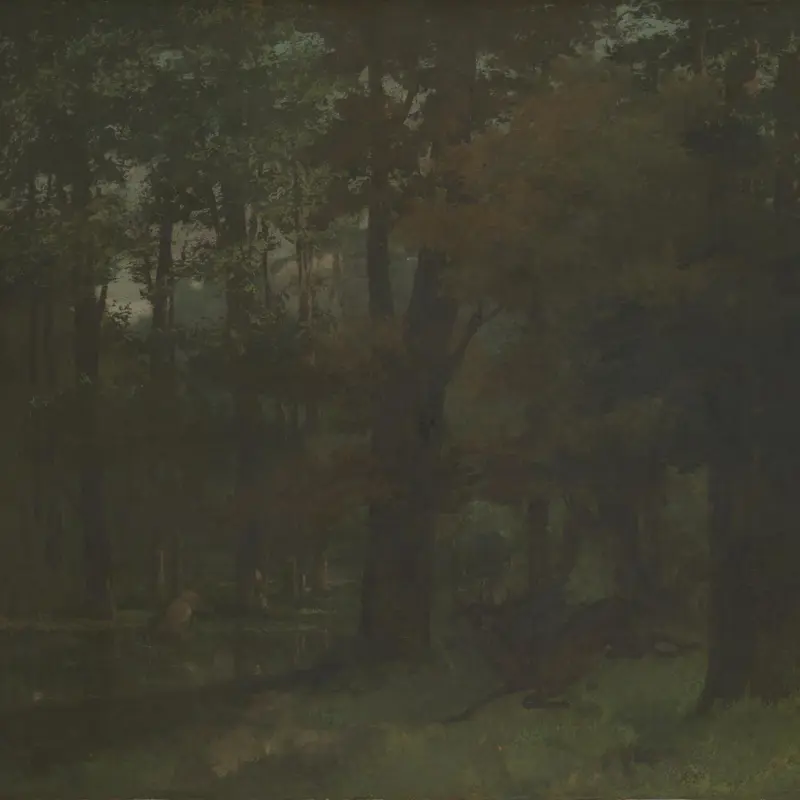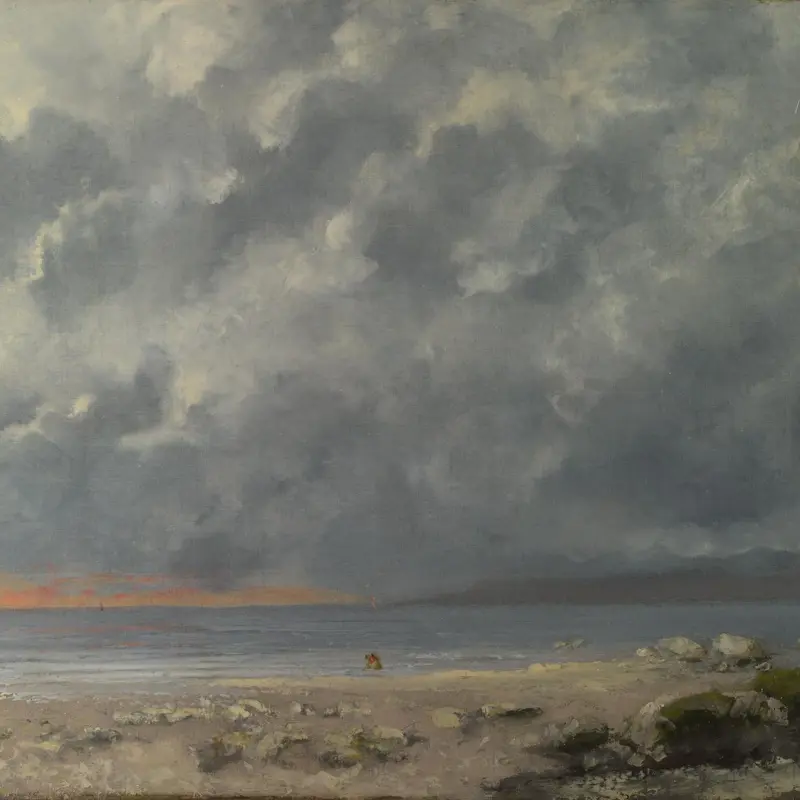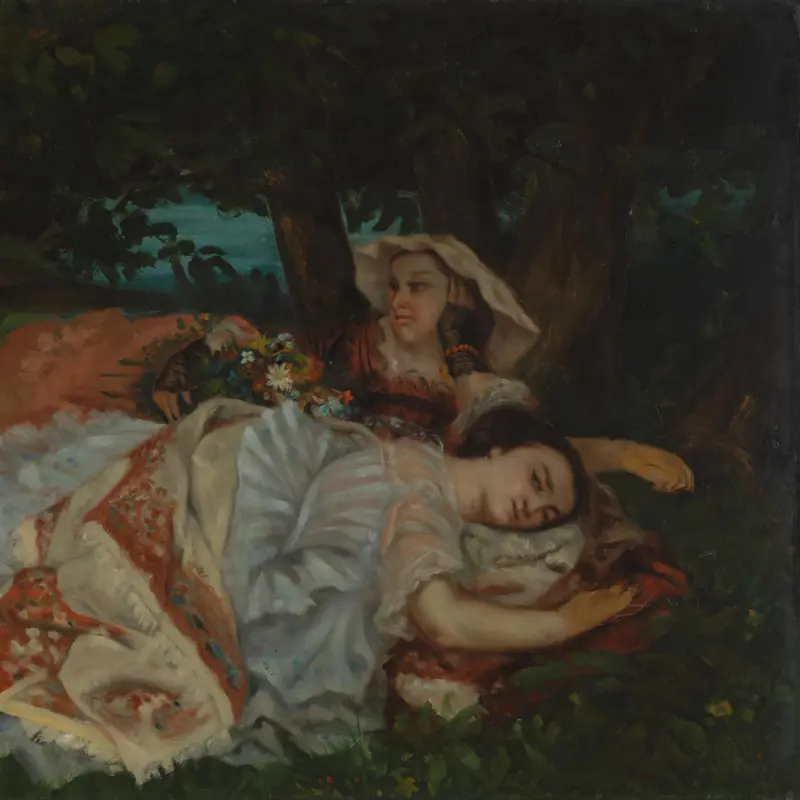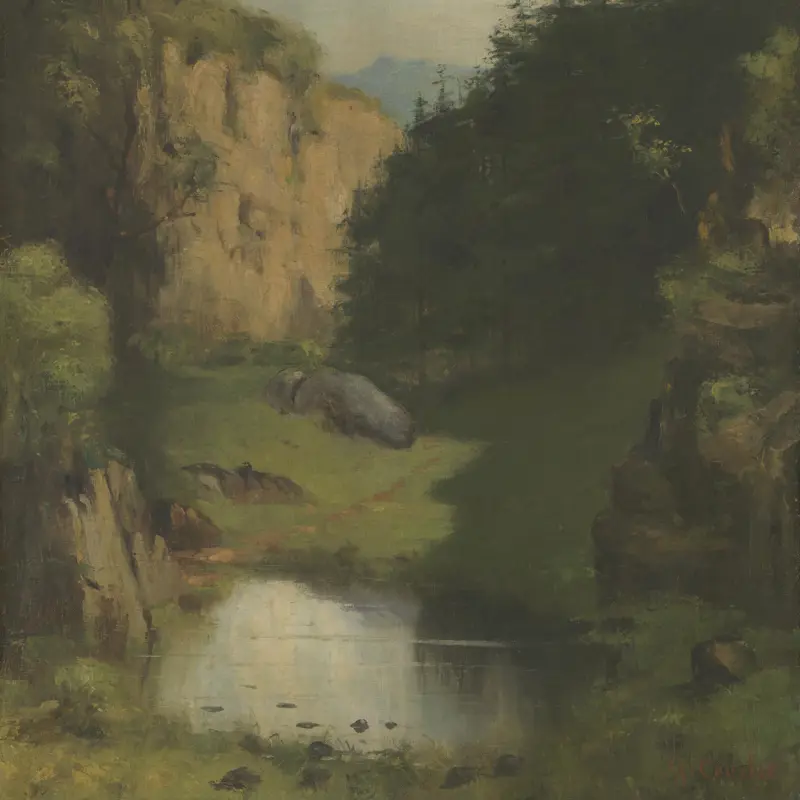Gustave Courbet, 'Still Life with Apples and a Pomegranate', 1871-2
About the work
Overview
In a warm and dark room, Courbet’s rich, ripe apples seem to glow as if in firelight. The heavy earthenware bowl lined with pale blue slip seems almost too small for the weight of the fruit piled into it. Among them is a single pomegranate, squeezed in at the base of the heap.
In 1871 Courbet was jailed for his involvement in the Paris Commune, the radical government that ruled Paris for a few months that year. Allowed to paint but forbidden to have models pose for him, his sister Zoé brought him flowers and fruit, and he was able to explore still-life painting, a genre almost new to him.
Courbet knew the still-life paintings of seventeenth-century Dutch artists in which rotting fruit and dying flowers were symbols of the fleeting nature of life. But Courbet’s apples are things of beauty, rather than a warning of death. They are his affirmation of life – each one singular, sweet-smelling and tactile.
Key facts
Details
- Full title
- Still Life with Apples and a Pomegranate
- Artist
- Gustave Courbet
- Artist dates
- 1819 - 1877
- Date made
- 1871-2
- Medium and support
- Oil on canvas
- Dimensions
- 44.5 × 61 cm
- Inscription summary
- Signed; Dated
- Acquisition credit
- Bought, 1951
- Inventory number
- NG5983
- Location
- Room 25
- Collection
- Main Collection
- Frame
- 19th-century French Frame
Provenance
Additional information
This painting is included in a list of works with incomplete provenance from 1933–1945; for more information see Whereabouts of paintings 1933–1945.
Text extracted from the ‘Provenance’ section of the catalogue entry in Sarah Herring, ‘National Gallery Catalogues: The Nineteenth Century French Paintings’, vol. 1, ‘The Barbizon School’, London 2019; for further information, see the full catalogue entry.
Exhibition history
-
2012Carl Schuch: Ein europäischer MalerÖsterreichische Galerie Belvedere26 June 2012 - 14 October 2012
Bibliography
-
1929C. Léger, Courbet, Paris 1929
-
1949Galerie Daber, Courbet: Exposition du 130e anniversaire de sa naissance, 10 juin 1819-10 juin 1949, Paris 1949
-
1955The National Gallery, The National Gallery: 1938-1954, London 1955
-
1957Martin Davies, National Gallery Catalogues: French School, 2nd edn (revised), London 1957
-
1970Davies, Martin, and Cecil Gould, National Gallery Catalogues: French School: Early 19th Century, Impressionists, Post-Impressionists etc., London 1970
-
1977R. Fernier, La vie et l'oeuvre de Gustave Courbet: Catalogue raisonné, 2 vols, Paris 1977
-
1978K. Herding and W. Hofmann, Courbet und Deutschland (exh. cat., Hamburger Kunsthalle, Hamburg; Städtische Galerie im Städelschen Kunstinstitut, Frankfurt am Main), Cologne 1978
-
1978H. Toussaint et al., Gustave Courbet 1819-1877 (exh. cat., Royal Academy of Arts, London), London 1978
-
1988S. Faunce and L. Nochlin, Courbet Reconsidered, (exh. cat. Brooklyn Museum, 4 November 1988 - 16 January 1989), New York 1988
-
1996J.M. Przyblyski, 'Courbet, the Commune, and the Beginnings of Still Life in 1871', Art Journal, 1996, pp. 28-37
-
2001
C. Baker and T. Henry, The National Gallery: Complete Illustrated Catalogue, London 2001
-
2010K. Herding and M. Hollein, Courbet: A Dream of Modern Art (exh. cat., Schirn Kunsthalle, Frankfurt), Frankfurt 2010
-
2011R. Bruyeron, Courbet: écrits, propos, lettres et témoignages, Paris 2011
-
2019Herring, Sarah, National Gallery Catalogues: The Nineteenth Century French Paintings, 1, The Barbizon School, London 2019
Frame
This nineteenth-century French frame is made from carved oak in the Louis XIV style. It features a dentil motif at the back edge. The corner and centre cartouches are adorned with palmette motifs, scrolls and foliage. Strapwork, set against a cross-hatched background, meanders freely across the frame. A sanded flat leads to the sight edge, decorated with acanthus leaves.
The frame was entirely overgilded, yet it still retains the ornate detailing created with engraved lines by the ‘répareur’. In 1977 the frame was restored. This frame is probably original to the painting.
About this record
If you know more about this work or have spotted an error, please contact us. Please note that exhibition histories are listed from 2009 onwards. Bibliographies may not be complete; more comprehensive information is available in the National Gallery Library.








